Qijia Culture – Its Disappearance Remains An Ancient Mystery
Ellen Lloyd - AncientPages.com - The ancient Qijia culture remains a historical and archaeological puzzle. Its mysterious and sudden disappearance leaves us with many unanswered questions.
What happened to these ancient people? Evidence of a mysterious prehistoric disaster has been uncovered at an amazing archaeological dig in the upper reaches of the Yellow River.
Discovery Of The Qijia Culture
Evidence of the culture was first unearthed in the small village of Qijiaping, in the northwestern Chinese province of Gansu, in the early 1920s by the Swedish geologist Johan Gunnar Andersson.
Map of the Neolithic to Bronze Age in North China and the Eurasian steppe. Map built with the help of Li Liu and Xingcan Chen: The Archaeology of China: From the Late Paleolithic to the Early Bronze Age, Cambridge University Press
Around the mid-20th and early 21st centuries, more ancient sites were discovered suggesting that the Qijia culture existed from about 2250 B.C to 1900 B.C.and it is the only Neolithic culture to be uncovered in China that shows the northern Eurasian influence.
This pot, found in the tomb with the small chamber, contains o-shaped incisions that form an elaborate design. It is handmade and made of red clay. (Photo courtesy Chinese Cultural Relics.)
Little is known about the Qijia culture, but excavations revealed that these people lived in large villages in terraces along the Huang He (Yellow River) and buried their dead in pits. Their most common implements were stone axes and rectangular knives, although small copperware items.
Bronze mirror, Gansu. Qijia culture (2400 - 1900) National Museum of China. Image credit: Prof. Gary Lee Todd
Scientists also discovered “bone divination lots,” which are artifacts used to predict the future. Some of the unearthed artifacts included comb-like designs and amphora-like vases that are unfamiliar in ancient China. Did these items and motifs perhaps originate in another part of the world?
Archaeological Excavations Shed Some Light On The Mysterious Disappearance Of The Qijia Culture
When archaeologists excavated the ruins of two of four half-underground cellar-like houses in the 400-home village, they found human remains dating back 3,500 to 4,000 years. At the site of one house, the remains of 14 human beings in groups of three to five shocked the researchers. It was the first time Chinese archaeologists had stumbled upon the remains of so many ancient people in a single house.
Although Chinese archaeologists have clues to the existence of Qijia Culture ruins in Qinghai Province from as early as the 1950s, they did not actually find the site until 30 years later.
The skeleton of an adult female who is facing toward the northwest was discovered among the prehistoric tombs in China. Much of her skeleton below the abdomen is destroyed. Credit: Courtesy Chinese Cultural Relics.
Even after the first excavation was conducted near Lajia Village in 1999, when some large jade articles such as pendants and knives typical of the Qijia culture were unearthed, archaeologists were not sure what else was awaiting them.
The 14 sets of human bones were found buried irregularly around the house, covering a floor space of roughly 14 square meters. Some lie on one side, others are entwined, as if in an embrace, while still others seem to crawl.
Near the round-shaped cooking stove in the center of the house is a skeleton that appears to be an adult, with hands raised over the head and two legs arched together. It is possible the person was killed before the body hit the ground.
In this tomb a small chamber filled with pottery was found beside the skeletons. (Photo courtesy Chinese Cultural Relics.)
Zhao Zhijun, a doctor in archaeology and a research fellow with the CASS Archaeology Institute said he had never seen anything like this before.
Something enormously extraordinary must have happened to these ancients," he said. "The young and strong have run for life, leaving behind children and the elderly who then appeared to have hidden in places they thought were safe to shelter in," Zhao said.
A cluster of the remains of five ancients was found in the southwestern section of the house, appearing to be four children under the protection of one senior person.
Near the east wall, one could see the skeleton of an elder sitting against the wall, propped up with the right hand, the left hand holding a baby to its bosom, its face close to the head. The baby's two tiny hands are fastened around the elder at the waist, giving an impression of pain and horror.
A Rare Site Of A Prehistoric Disaster
It remains unclear what caused the death of these horrified people. Some archaeologists think the Qijia culture was a victim of pestilence or a plague. Another proposal points to religious action. There are suggestions of infanticide, but there is not enough evidence to support these claims.
There are also scientists who say we should not ignore environmental changes in the region. “Most suggestions about the root cause of the disaster, such as flood or pestilence, suggest a relationship between man and nature at the time of the tragedy," said Wang Renxiang, head of the excavation team and research fellow of the CASS Archaeology Institute. "If they are verified, that means the area had already witnessed some environmental and ecological deterioration as much as 4,000 years back.
We may never come to the bottom with this sad, ancient mystery, but there is no doubt that something terrible caused the mysterious disappearance of the Qijia culture.
Written by Ellen Lloyd – AncientPages.com
Copyright © AncientPages.com This material may not be published, broadcast, rewritten or redistributed in whole or part without the express written permission of AncientPages.com
More From Ancient Pages
-
 Easter Island Holds Clues To The Disappearance Of People On The ‘Mystery Islands’
Archaeology | May 14, 2021
Easter Island Holds Clues To The Disappearance Of People On The ‘Mystery Islands’
Archaeology | May 14, 2021 -
 The Navajo People In The Land Of The Four Sacred Mountains
Civilizations | Jun 10, 2020
The Navajo People In The Land Of The Four Sacred Mountains
Civilizations | Jun 10, 2020 -
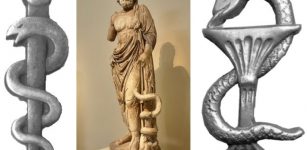 Why Is A Snake Symbol Of Medicine And Pharmacies?
Ancient History Facts | Jan 15, 2018
Why Is A Snake Symbol Of Medicine And Pharmacies?
Ancient History Facts | Jan 15, 2018 -
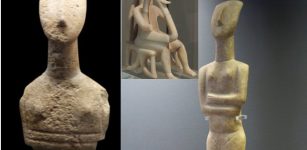 The Cyclades And Their Advanced And Mysterious Society Lost In Time
Featured Stories | Apr 25, 2022
The Cyclades And Their Advanced And Mysterious Society Lost In Time
Featured Stories | Apr 25, 2022 -
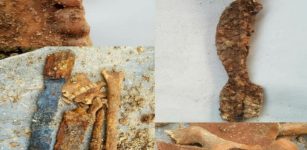 Ancient Tomb Chamber Of Parthian Warrior Was Accidentally Unearthed In Iran
Archaeology | Apr 30, 2020
Ancient Tomb Chamber Of Parthian Warrior Was Accidentally Unearthed In Iran
Archaeology | Apr 30, 2020 -
 Advanced Ancient Knowledge Of Chemistry – From Chrome Plating To Nanotubes
Ancient Technology | Jun 12, 2019
Advanced Ancient Knowledge Of Chemistry – From Chrome Plating To Nanotubes
Ancient Technology | Jun 12, 2019 -
 Was Spruce Hill In Ohio Home To An Ancient Lost Civilization? Traces Of Strong Fire Puzzle Scientists
Featured Stories | Jan 17, 2018
Was Spruce Hill In Ohio Home To An Ancient Lost Civilization? Traces Of Strong Fire Puzzle Scientists
Featured Stories | Jan 17, 2018 -
 Parthians: Their Great Empire And Skilled Horse Archers
Civilizations | Nov 10, 2016
Parthians: Their Great Empire And Skilled Horse Archers
Civilizations | Nov 10, 2016 -
 Treasure Hoard Of Rare Gold Coins From The Crusader Conquest Discovered In Caesarea, Israel
Archaeology | Dec 8, 2020
Treasure Hoard Of Rare Gold Coins From The Crusader Conquest Discovered In Caesarea, Israel
Archaeology | Dec 8, 2020 -
 Did Mastermind Imhotep Receive Sacred Knowledge From Followers Of Horus At Heliopolis?
Featured Stories | Feb 7, 2018
Did Mastermind Imhotep Receive Sacred Knowledge From Followers Of Horus At Heliopolis?
Featured Stories | Feb 7, 2018 -
 Dark History Of Pömmelte, The German Stonehenge – What Can The Nebra Sky Disc And Archaeology Reveal?
Archaeology | Jul 3, 2018
Dark History Of Pömmelte, The German Stonehenge – What Can The Nebra Sky Disc And Archaeology Reveal?
Archaeology | Jul 3, 2018 -
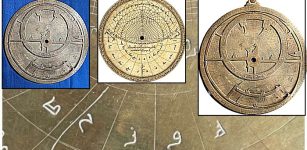 Rare Eleventh-Century Astrolabe Unearthed Recently Sheds Light On Islamic-Jewish Scientific Exchange
Scripts, Paintings & Inscriptions | Mar 4, 2024
Rare Eleventh-Century Astrolabe Unearthed Recently Sheds Light On Islamic-Jewish Scientific Exchange
Scripts, Paintings & Inscriptions | Mar 4, 2024 -
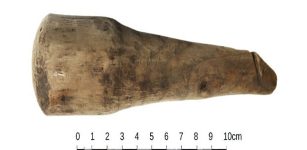 Unique Roman Artifact Discovered At Vindolanda Was More Than A Good Luck Charm
Archaeology | Feb 20, 2023
Unique Roman Artifact Discovered At Vindolanda Was More Than A Good Luck Charm
Archaeology | Feb 20, 2023 -
 Lilith – Beautiful Demonic And Brave Symbol Of Equality And Adam’s First Wife Who Refused Subordination
Biblical Mysteries | May 24, 2020
Lilith – Beautiful Demonic And Brave Symbol Of Equality And Adam’s First Wife Who Refused Subordination
Biblical Mysteries | May 24, 2020 -
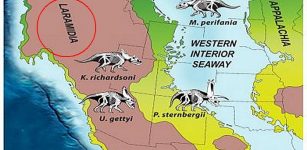 Rare Fossil Of A Dog-Sized Horned Dinosaur From ‘Lost Continent’ Identified By British Scientist
Archaeology | Dec 5, 2015
Rare Fossil Of A Dog-Sized Horned Dinosaur From ‘Lost Continent’ Identified By British Scientist
Archaeology | Dec 5, 2015 -
 Moirai (The Fates): Greek Incarnations Of Destiny And Personification Of A Single, Unavoidable Fate
Featured Stories | Aug 1, 2019
Moirai (The Fates): Greek Incarnations Of Destiny And Personification Of A Single, Unavoidable Fate
Featured Stories | Aug 1, 2019 -
 Evidence Mendel Discovered The Laws Of Inheritance Decades Ahead Of His Time
Archaeology | Jul 12, 2022
Evidence Mendel Discovered The Laws Of Inheritance Decades Ahead Of His Time
Archaeology | Jul 12, 2022 -
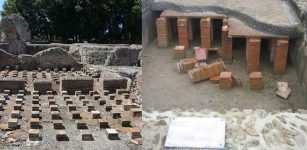 Hypocaust – First Central Heating Invented By Ancient Romans 2,000 Years Ago
Ancient History Facts | Jan 14, 2018
Hypocaust – First Central Heating Invented By Ancient Romans 2,000 Years Ago
Ancient History Facts | Jan 14, 2018 -
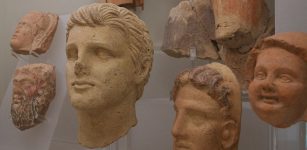 Intriguing Phenomenon Sheds New Light On The Etruscans
Archaeology | Sep 25, 2021
Intriguing Phenomenon Sheds New Light On The Etruscans
Archaeology | Sep 25, 2021 -
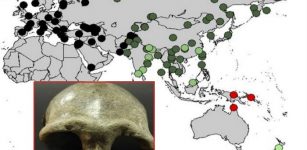 Denisovan DNA Found In The Genome Of Oldest Human Fossil Discovered In Mongolia
Archaeology | Oct 30, 2020
Denisovan DNA Found In The Genome Of Oldest Human Fossil Discovered In Mongolia
Archaeology | Oct 30, 2020





